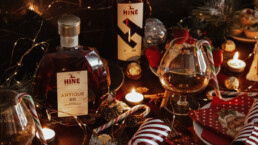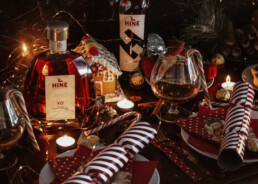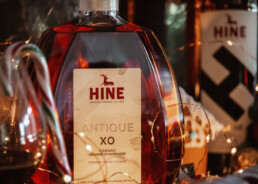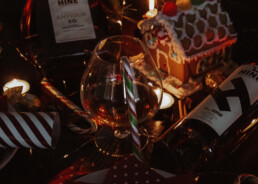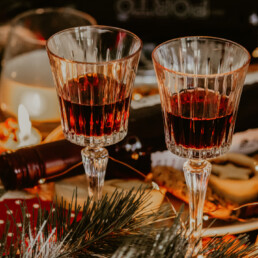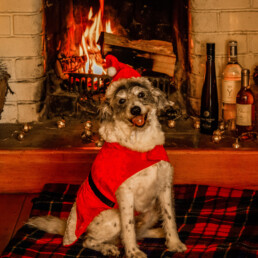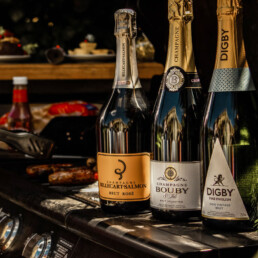We LOVE our fine wines here at Dhall & Nash, yet we also LOVE to indulge in a wee dram of something a tad stronger. That much-needed ‘medicinal’ de-stressor – our hands firmly around a brandy balloon full of liquid amber Cognac or a snifter of glossy Grappa. Ideal to get you through the umpteenth rendition of Jingle Bells or Uncle George’s conspiracy theories! Not to mention they are the most glorious gifts for the friend who has (almost) everything. Indeed, these are ‘silly season helpers’ to ease you joyfully through the holidays…
So, what makes spirits so special in the world of alcoholic bevvies? Here’s a quick look into the magical alchemy of distillation…
While the history of distilling is actually tied to the history of alchemy – yes, we owe liquid confidence to an ancient mystical science – the basic concept of distilling has always been pretty simple: making a harder alcohol from a lower alcohol base.
But why do we have to distill hard liquor? Why can’t we just keep fermenting it to higher and higher ABVs (Alcohol by Volume)? Fermented beverages sit at a much lower alcohol content than spirits, whereas, a typical spirit is 80 proof, which is 40 percent ABV. But as often happens in the science of booze, it’s all about the yeast.
As the yeast eat up the sugars (to make beer or wine, for example) they create alcohol and CO2, delightful waste products. But the more alcohol and CO2 they create, the less sugar there is for them to feed on. And at a certain point (around 14-18% ABV), the alcohol levels become toxic for the yeast. To create anything substantially “hard”, we can’t rely on yeast any further. To get higher ABV alcohol, we have to actually physically separate alcohol from water using evaporation and condensation – aka distilling.
Because alcohol has a lower boiling point than water, distillers can evaporate the alcohol (mostly) by itself, collect the vapours into a tube and use cold temperatures to force the alcohol to condense back into liquid of much higher alcohol content.
For example, when vaporising wine, you take the wholesome middle-cut of the run through the pot still, missing out the poisonous first part and the watery final part, as distillers have learned to do. You then are left with the grape spirit, grappa, eau de vie, or brandy of about 70% ABV.
Now, onto that all-important distillation vessel – Spirits can be made in ‘alembic’ pot stills (where flavour tends to be more important – whiskeys, cognac and similar), column stills (where we want a more neutral flavour, so vodkas, gins, etc.) or using both pot and column stills as a blend, for a sort of ‘best of both worlds’ approach – getting flavour from the pot still, but bulking it out with the cheaper to produce column distilled alcohol.
Many distilled spirits contain colouring ingredients, although the colours of some (e.g. Armagnac, Cognac, Scotch, Malt Whisky, Bourbon, some Rum and others) are derived from a few years’ maturation in oak casks. Yet others, such as Absinthe, certain flavoured vodkas, and some liqueurs obtain their colours from various added flavourings, such as fruit, herbs or spices.
Today the world is going crazy with a bounty of diverse distilled spirits being produced. Overall though, there are just six base liquors that form the foundation of the majority of cocktails and liqueurs. Brandy, gin, rum, tequila, vodka, and whiskey. Each are unique and have distinct styles within themselves. Here’s the basic characteristics of some of these liquors:
Brandy
“When life gives you eggnog, add a splash of brandy”
Also known as Cognac, Armagnac, Grappa, Spanish Brandy, Pisco, American Brandy, Eau-de-vie, these are distilled primarily from grapes, though sometimes other fruits are used like apples (Calvados), apricots, cherries (Eaux-de-vie) and the like. Typically, they are aged in oak, but this varies according to the style or traditions and are quite often blended. The alcohol content is typically 40% ABV (80 proof).
One of the finest of the fine is our Dhall & Nash staff favourite Hine Cognac. This is truly bottled opulence. Liquid gold. As smooth as silk, blurring the line between wine and spirits. This fabled creation is revered for good reason among even the most discerning drinkers.
So, What IS Cognac?
Cognac is a type of Brandy named for the town of Cognac in France. The easiest way to explain it would be all Cognacs are Brandy, but not all brandies are Cognac. It must fit strict criteria to be a Cognac rather than just a Brandy:
Firstly, it must hail from the Cognac AOC (Appellation d’Origine Contrôlée). Just as wines labelled Champagne must be from the Champagne AOC. Source of origin and locality is everything to French winemakers, and this extends to Cognac, too. The AOC system is the ultimate guarantee of the authenticity and quality of a product.
But wait, there’s more – within the Cognac AOC, there are seven growing regions or ‘departments’, sometimes referred to as ‘Cru’. There are two major players, of whom have (arguably) the highest reputation – Grande Champagne and Petite Champagne. (Side note: these have nothing to do with the sparkling cuvées that are synonymous with the name). The other five are Borderies, Fins Bois, Bons Bois, Bois Ordinaires and Bois à Terroirs.
Cognacs hailing from the Grande Champagne department of the AOC are considered by some to be the cream of the crop, followed closely by Petite Champagne. If a Cognac is comprised of a blend of these two designations it can be labelled as ‘Fine Champagne’ so long as the portion of Grande Champagne Cognac is 50% or more.
Cognac must be made from a specified grape variety (mainly Ugni Blanc), that has been distilled twice in special copper alembic stills. The designs of such stills are – you guessed it – controlled by law. Once the distillation process has been completed, it must be aged for a minimum of two years in Limousin oak casks.
One of the most frequently asked questions about Cognac is “what’s with the labelling system?” There are V’s and S’s and X’s aplenty – which can lead to a lot of head scratching for anyone who isn’t familiar with Cognac and all its intricacies. The good news is there’s really only four designations of which you need to remember. VS, VSOP, XO and Hors d’âge, and each of them are an indication of age.
VS: has been aged for a minimum of 2 years. VS stands for “Very Special” and can sometimes be represented as three stars.
VSOP: Guarantees at least 4 years of aging. VSOP stands for “Very Superior Old Pale” or “Reserve”.
XO: Until 2018, XO meant a wine was aged for 6 years. It now represents an aging time of 10 years, and the designation “Napoléon” will step in as the label for any brandies aged for 6 years. XO stands for “Extra Old”.
Hors d’âge: or “Beyond Age”. To be labelled Hors d’âge, the Cognac fits the criteria of an XO, but the term Hors d’âge is often used to differentiate Cognacs that represent an even higher level of quality than an XO.
The best bit about these Cognacs is that the label given to a Cognac is determined by the age of the absolute youngest brandy used in the blending. Even in a VS brandy it is possible that some of the blend comes from barrels aged for decades.
For however much we would love to sip an XO after our lavish Xmas dinner, don’t forget to have some fun with the young cognac “H” by Hine – the obvious one is to up the ante and put it in your festive eggnog or on Boxing Day serve it frozen in a shot glass. Or simply over ice with tonic, cider or ginger ale, garnished with a twist of lime, cucumber or rosemary… Go wild!
Grappa
Another fine example of a Brandy/Eau-de-vie style is Italian Grappa.
We’ve got you covered here at Dhall & Nash with the exquisite Sartori Grappa di Amarone della Valpollicella. Supple, smooth and touched by floral notes with hints of raisins and dried fruits. There’s nothing better than a little glass of quality Grappa to aid the digestion at the elegant conclusion to a lusciously languorous Xmas meal. After all, as they say in Italy: “one devil drives out another”!
So how is Grappa made? Traditionally, it is made from pomace, that is, discarded grape seeds, stalks and stems that are a by-product of the winemaking process. This is the perfect example of a ‘zero waste’ product. The pomace is combined with alcohol, then heated. This allows the mixture to separate, leaving behind a super potent beverage that is bottled and aged for a minimum of 6 months or in the Sartori Grappa di Amarone’s case, 24 months.
Admittedly, Grappa did have a bit of a bad rap initially. When producers first began making it, they took a “mix-and-match” approach and used a blend of pomace from a variety of grapes. It certainly did earn its “firewater” moniker in those days. Then in the 1960s, producers began experimenting by making it with a single grape for a higher quality drink and in some cases adding sugar or herbs for a less intense but more refined flavour.
Today, the world renown digestivo Grappa is a protected name under European law. In order to be called “Grappa”, it must be produced in Italy and made entirely from pomace following a specific distillation method. And absolutely no water can be added!
Grappa can be transparent, golden or brownish. As exactly like for wine, the taste depends on the grapes used to make it, and on the ageing. If aged in wood barrels, the colour turns light gold or darker, and it gets a slightly vanilla taste.
How is Grappa served in Italy? Basically, the best Grappa is savoured sipped from small glasses. But you’ll see in every café the locals add it to their coffee to make caffè corretto (which literally means “corrected coffee”). If you don’t like to mix your coffee with Grappa, you can make an ‘amazza caffe’ (literally, ‘coffee-killer’): the espresso is drunk first, followed by a “rinse” of your cup with some Grappa. Yum! But Grappa’s multiple purposes are not done quite yet. It can also be used to give a twist to a simple fruit salad. You’ll be surprised by the taste! Same with gelato – try to put some Grappa on top of your vanilla, pistachio, or chocolate gelato. Last but not least, put some on meat before barbecuing it. This will give it a special taste and the meat will be more tender. Now that’s a new secret marinade to keep your guests guessing! Buon appetito!
Hopefully you are no longer Bam-BOOZ-led for a Christmas gift – we have it all here at Dhall & Nash with these spirited ideas for pressies to show how much you care!
Happy sippin’ this holiday season. ☺
